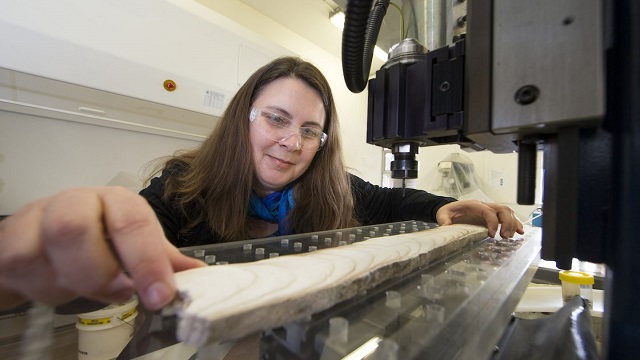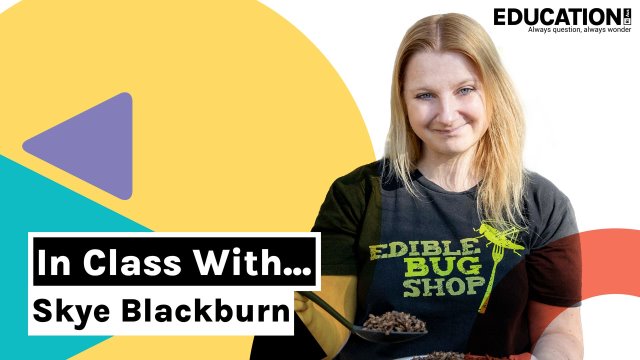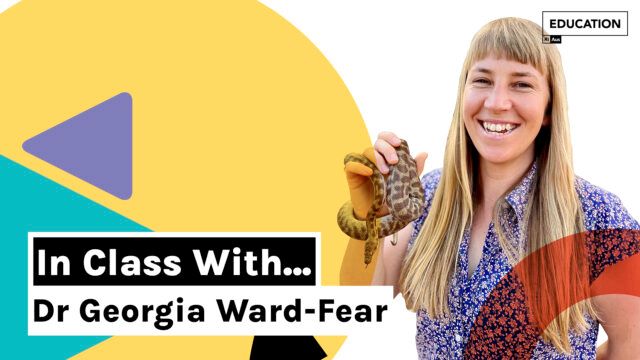What does being interested in Climate Change lead to in terms of a career? How do we know climate change is even happening – isn’t there still conflicting evidence? Nerilie Abram is living the dream, and trying to ensure it doesn’t turn into a nightmare.
This article answers those questions and is an interesting and different way of delivering the Year 10 Global Systems Earth and Space Science curriculum, as well as the Year 6, 7 and 9 Biological Sciences curriculum looking at ecosystems, with links to Year 9 and 10 Work Studies curriculum.
Word Count: 1482

Nerilie Abram is a scientist, a leader, a mother and a gardener, but above all, she is certain — certain that climate change is happening.
“Often the science can sound like we’re still figuring things out,” she says. “But knowing how much we do know — how clear the evidence is — makes me concerned. We definitely are experiencing climate change right now. It’s having impacts right now, and those impacts are going to get worse if we don’t get on top of solving the problem.”
Nerilie, 41, is a paleoclimatologist at the Australian National University (ANU) in Canberra, and not long ago returned from a summer in Antarctica. She was working near Davis Station, a permanent base operated by Australia’s Antarctic Division, to drill a 300-metre ice core — a time capsule that will allow her to look at the Earth’s climate over thousands of years.
Nerilie has always loved nature, but it took a first-year geology course at the University of Sydney to catapult her into the world of earth sciences. After her undergraduate degree, she moved into a PhD at ANU.
“At that stage I was thinking about what the big problems were going to be in the future and one of those stood out as being climate change,” she says.
Her PhD focused on studying tropical corals to see how the climate has changed over time.
“Every year that a coral grows leaves a band in its skeleton — exactly the same way as trees have rings,” Nerilie explains.
Deeper: STEM Pack 10: Climate Change
By analysing a core section of the skeleton, climate scientists can determine the temperature of the ocean when the coral was growing. With lifespans of hundreds of years, corals can show us when warming began, what the natural variability is and how we are now pushing the ocean outside of its normal range.
After her PhD, Nerilie found herself in Cambridge, UK, at the British Antarctic Survey to study ice cores. These frozen time machines allow her to not only look at temperature but also the past atmosphere, ocean salinity and volcanic activity.
“We can look at the composition of the bubbles of ancient atmosphere within the ice core, and that’s where we get our records of carbon dioxide in the atmosphere prior to when we started measuring it about 60 years ago,” she explains.
“It gives an important perspective to current climate change. We’re starting to understand the extent of how far we’ve changed the system.”
Nerilie is now back at ANU, studying both tropical and frozen samples. This mix not only takes her to far-flung places such as Indonesia, Antarctica, Greenland and Christmas Island, but also gives her a big picture overview of the changing planet.
“The climate is all connected,” she says. “Things that happen in the tropics actually have an impact on the climate in Antarctica.”
So, what does the past tell us about our current and future situation?
“In the past we can see that climate has changed naturally,” Nerilie says. “Now we have a long-term warming of climate that began in some places as early as the mid-1800s.”
Comparing the natural record with climate models shows us that on average, the world has warmed by one degree Celsius since pre-industrial times and that these changes “are only consistent with greenhouse gases that humans have been putting into the atmosphere”.
These records tell us that we don’t have much further to go before exceeding targets such as that set in the Paris Agreement, which aims to keep the world below two degrees Celsius of warming.
Nerilie says “there are good reasons why those targets were set” — they’re based on records that show how that level of warming impacted the Earth in the past.
She thinks that although we should try our hardest to meet these targets, we’ll likely overshoot them before cooling the world again by developing new technologies to pull carbon dioxide out of the atmosphere.
But we cannot rely on our future selves.
“There are already destructive and damaging impacts of climate change happening right now,” Nerilie says. “The worse that we let the problem get, the more impacts we will see.”
Humanity may push systems into states they can’t bounce back from. For example, the Great Barrier Reef may reach a point where it cannot recover from the damage caused by marine heat waves and bleaching. Identifying these tipping points is extremely difficult, but they do exist, and we are in danger of toppling.
There is a real urgency to our current situation that may require Nerilie’s team — and climate scientists around the world — to work outside of the traditional boundaries of their research to develop solutions.
Everyone, she believes, has a role to play in mitigating climate change, including individuals. Her family try to live greenly; they have just moved into a new house where they plan to put up solar panels, and they chose the location so they could ride to work and school.
“We have some pretty cool vegetable gardens in our new place,” she adds. “We’ve inherited a glut of chillies, so we’ve been making a lot of chilli jam.”
But she says it’s difficult to balance her green ideals with reality.
“I struggle with the same things that other people struggle with as well,” she notes. “My work involves travelling, and I know that’s something making the problem worse.”
She and her husband also grappled with the ethics of having three children. Nerilie knows that their choice contributes to the overall problem — and yet this knowledge drives her passion to do the best science she can, striving to make sure her kids have a liveable future.
She believes leadership must also come from international organisations, governments and businesses in order to incentivise individual choices.
She has recently begun working with the Intergovernmental Panel on Climate Change (IPCC), which provides policymakers around the world with information about the science of climate change, its impacts and risks, and potential solutions.
At the British Antarctic Survey, Nerilie also had plenty of chances to communicate with influential people, ranging from business leaders to royalty.
“Prince Charles came and was given a tour,” she recalls. “We took him into the freezers and gave him some ice to hold, to look at the bubbles of ancient air trapped within that Antarctic ice.”
But she admits that sometimes “there are days where you wonder if you’re actually making a difference, particularly when you see political statements that don’t seem to be taking into account the science”.
It’s frustrating, she says, that the evidence of climate change has existed for decades and yet so little progress has been made to mitigate it.
“It worries me as to what it will actually take for it to be apparent that we can’t just continue on as we have been doing,” she says. “The bottom line is that we really need to be reducing emissions.”
But she’s also aware of why many people shut down when confronted with the urgency of climate change.
“There is a real balance between making sure that you are communicating the extent of the problem and how real it is, how serious it is, that it’s happening right now, but also making sure that you don’t leave people with a sense of hopelessness,” she explains.
She says she talks to her kids — aged 9, 12 and 14 — about climate change, but has to walk that fine line between being truthful and ensuring they don’t become too worried.
Overall, she has the impression that younger generations have “a much more educated understanding of how the Earth works and the climate problems around them” — which is a cause for hope.
Realistically, though, she is not convinced we will reduce emissions enough to meet the Paris target, but she says we must remain optimistic to move forward.
“If people feel hopeless about a problem then we won’t come up with a solution,” she says. “Climate change is a huge problem, but it isn’t an impossible problem.”
In the next few years, Nerilie and her collaborators around the world will work on analysing the ice core recently brought back from Antarctica, with the hopes of learning more about how Indian Ocean winds have influenced rainfall in southern Australia.
This could shed new light on the Millennium drought – a low-rainfall event that heavily impacted southern Australia between 2001 and 2009 – and help us prepare for more extreme events in the future.
Nerilie is also part of the Centre of Excellence for Climate Extremes, an Australian research consortium focusing on studying droughts, heat waves, extreme rainfalls and more — “the types of things that affect people,” she says.
“The thing that drove me towards this area of research was knowing that I am working on a project that is important, and that the questions we’re answering are important for people right now.”
Years: 6, 7, 9, 10
Login or Sign up for FREE to download a copy of the full teacher resource





